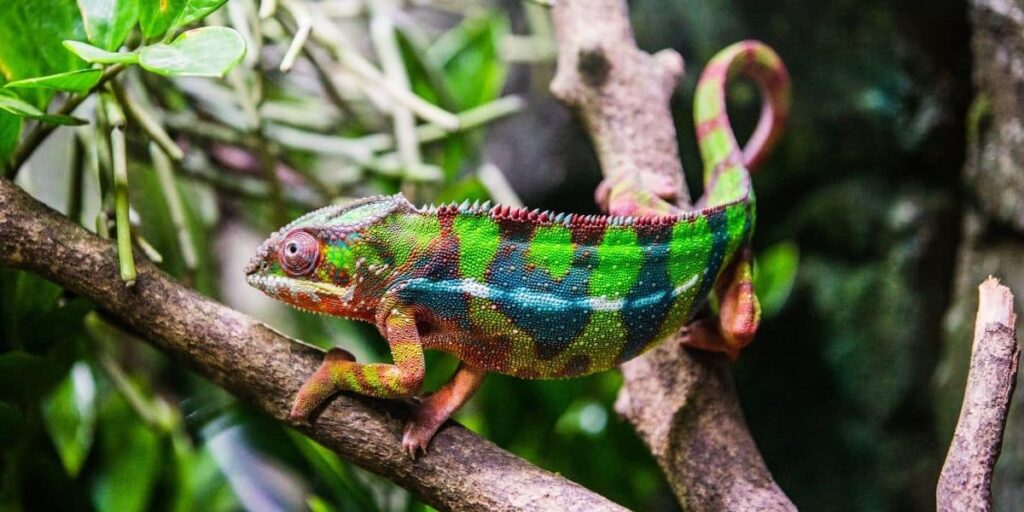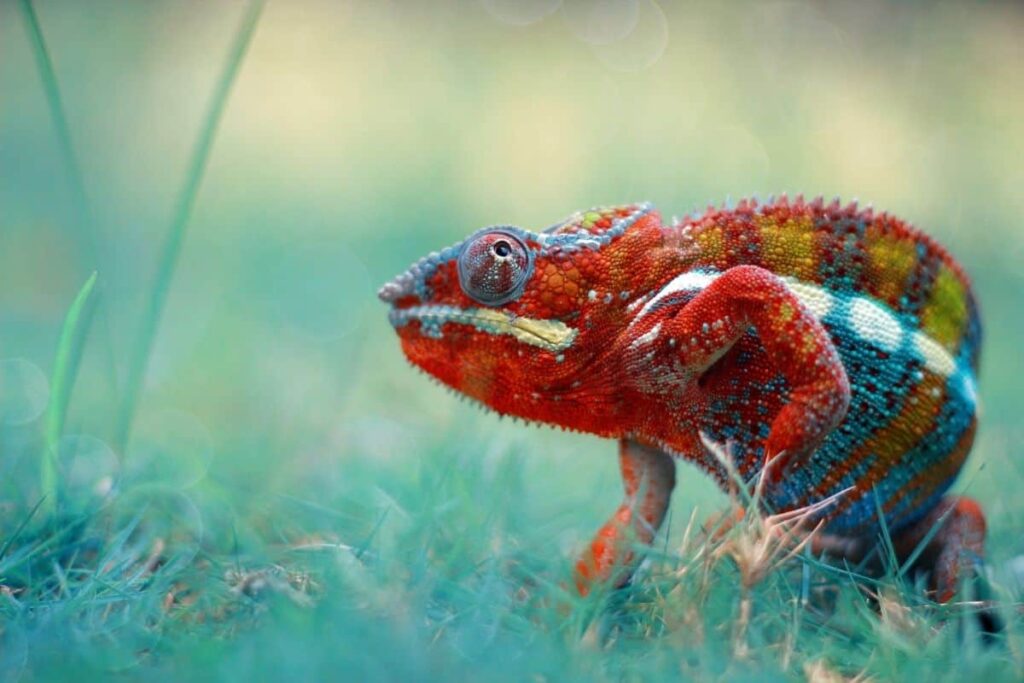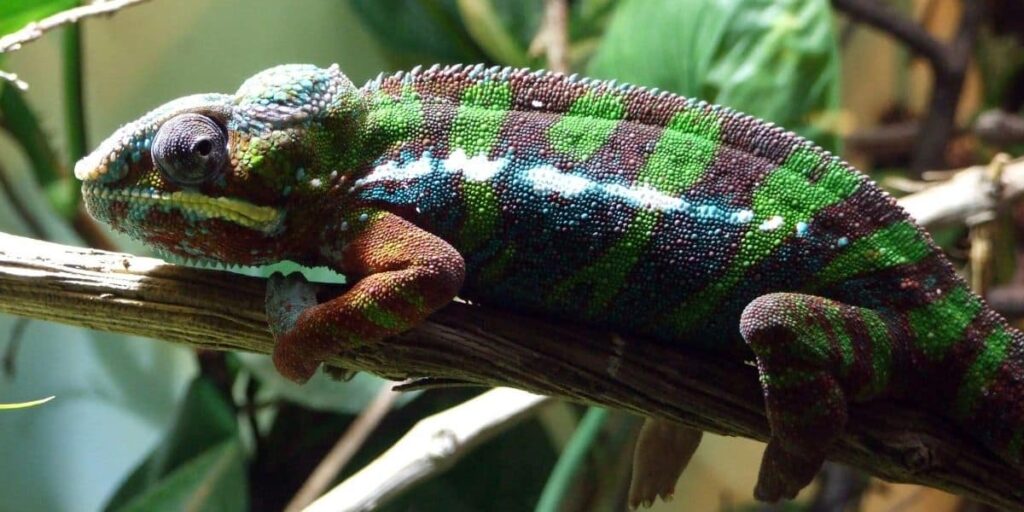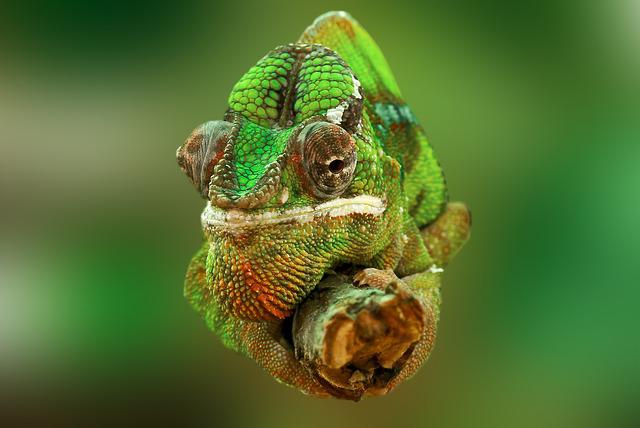There are many things that make the chameleon an interesting animal and many of these things mean that these creatures need to be cared for in a very specific way.
When taking on a chameleon, you must be prepared to provide it with heat and a place to bask; why is this?
This is because chameleons are cold-blooded. This means that, rather than regulating their body temperature in the same way that we would, they need to be exposed to heat to warm up.
Without a proper place or the right conditions to do this, the chameleon would become sick in around two weeks and after symptoms start to show, the animal could then go on to die.
Of course, nobody wants this for their chameleon so understanding the importance of basking and how to correctly care for a cold-blooded animal is essential.
What’s The Difference Between Being Warm-Blooded And Cold-Blooded
It would be easy to assume that being cold-blooded means that an animal literally has cold blood, but this is not the case.
Warm-blooded animals such as humans and other mammals are able to maintain their body heat independently. Think about it, your body heat stays just as it should be without you even having to think about it.
Of course, you might need to wrap up in a woolly coat and a scarf when it snows but your body temperature is unlikely to drop significantly without some sort of trauma or emergency.

For a cold-blooded animal, also known as an ectothermic animal, the ability to retain a consistent body temperature is non-existent.
Instead, they rely on absorbing heat from the sun, or in the case of a captive animal, a UV light, to raise and maintain a comfortable body temperature.
Moreover, if the animal becomes too hot, it will need to go to a cooler place to lose heat.
While there are some reptiles that will ‘sweat’ by opening their mouths and allowing moisture to evaporate, this isn’t the most reliable method of cooling.
Maintaining Body Heat For A Pet Chameleon
If you have a pet chameleon, you will quickly come to realize that these animals need a good amount of care.
Many species of cham are considered a slightly more advanced exotic pet but beginners will be able to manage provided they are aware of the basic needs of these reptiles.
Aside from food, a basking place is one of the most important things that you can provide for your pet chameleon.
Typically this is an area of the enclosure that features a spot where the chameleon can sit indirect light from your heat lamp.
Without this, the animal would not survive for long but you must also consider the right temperature.

While different species of chameleon may prefer very slightly different temperatures, a good rule of thumb to follow is to ensure the heat lamp remains somewhere between 82ºf and 90ºf during the day.
At night time, you can lower the temperature to between 64ºf and 77ºf as this will best replicate the conditions that your pet would have experienced in nature.
Chameleon owners should also be aware that the basking temperature for young chameleons needs to be slightly cooler at a maximum of 85ºf.
This is because the babies do not learn right away how to effectively control their body temperature and may sit for prolonged periods which could then cause them to overheat.
There should also be parts of the tank that are a little cooler so that your chameleon has a choice of where he sits and is able to regulate his body temperature as his needs dictate.
How Do I Know I My Chameleon Is Too Cold?
Since your pet chameleon can’t talk and is unable to communicate with you in the way that a dog or a cat might, you need to be able to learn to read his subtle signals to know when something is wrong.
Once you get to know your pet, you will soon begin to understand what he is trying to tell you through these subtle signs and his body language.
One of the great things about owning a chameleon is that you can easily tell its condition just by looking at its coloring.
These animals are famous for several things including their long sticky tongues but one of the things that they are most well known for is their ability to change color.

When a chameleon is too cold, it will change to a much darker color.
Doing this allows it to absorb more heat; it is a commonly known fact that dark colors attract heat more readily.
That said, there are other reasons relating to health that your chameleon might change to a darker color. So, if you do notice this, it is important not to instantly assume that this is related to being too cold.
You should first check the temperature of the animal and respond accordingly.
Conclusion
Chameleons are reptiles and, just like all other types of reptiles, they are cold-blooded. But this doesn’t mean that their blood literally runs cold.
Being cold-blooded means that an animal must bask in warm light in order to raise its body temperature and sit in a cool place when they want to lose heat.
When you adopt a chameleon, this means that you must make sure that your pet has somewhere that they can sit and bask with a heat lamp directly overhead (this should never be in the enclosure as the animal may burn themselves on it.)
Furthermore, you should always make sure that your chameleon enclosure has a slightly lower ambient temperature as well as somewhere that your pet can cool off.
If you notice a change in the color of your chameleon, particularly if they become very dark, this could signal that they are too cold and this should be investigated.




